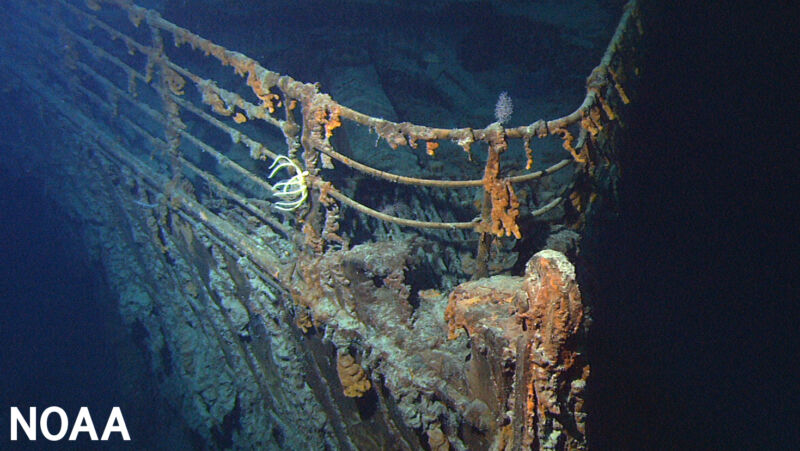The search for the lost sub pushed up against the limits of tech and physics

Enlarge (credit: NOAA/Institute for Exploration/University of Rhode Island)
Was that surprisingly fast or excruciatingly slow? The search to discover the fate of the Titan submersible took place against a backdrop of hopes for survival and dwindling oxygen supplies. Given that, the time it took to confirm the fate of those on board may have seemed excruciatingly slow.
At the same time, the extreme depths of the Titanic's wreck posed a lot of challenges, and it's extremely difficult to find anything on the ocean's bottom if you don't know exactly where to look. From that perspective, the successful conclusion of the search can be viewed as happening remarkably quickly.
A complex siteOne of the factors that took time was simply getting the right hardware to the right location. There aren't a lot of remotely operated vehicles that are built to withstand the pressures found at over 3,500 meters deep in the ocean. Not all of those vehicles will have the right equipment to handle the search, and some of the ones that do will be in use elsewhere. Any equipment that was appropriate and available would then have to get sent to Canada, put on board an appropriate vessel, and then taken several hundred miles off the coast to the site of the Titanic. And then it would have to descend to the wreck site.